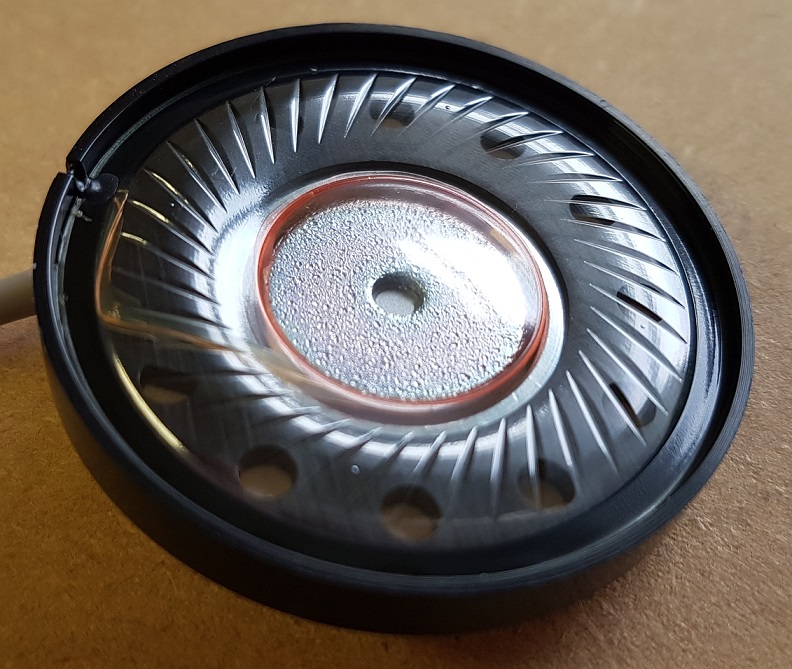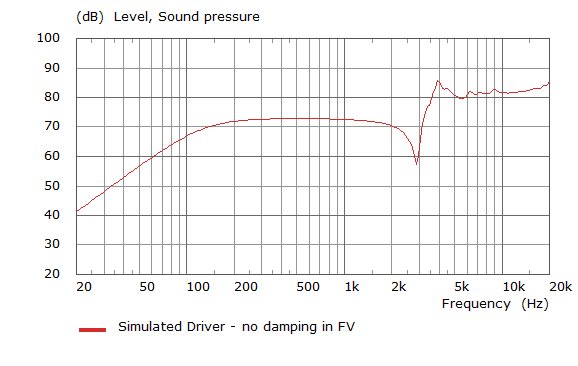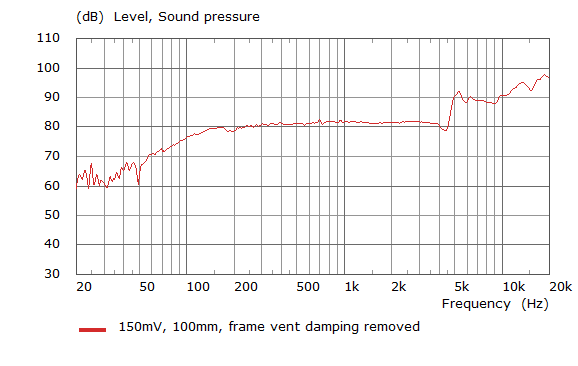Driver in Infinite Baffle
The graphs below compare the simulated driver and a measured driver that is not identical, but similar.

Some observed differences are:
- frame diameter slightly smaller, 40mm where model simulation is 50mm
- there are rib indentations formed into the diaphragm (which will be discussed later)
- number of frame vent holes is different (8 + 2 semi-holes)
- Instead of a single bass port, there are 4 motor vents passing through the shellpot backplate
In the simulation, prescribed losses are from the hysteretic damping in the mechanical materials and the motor damping. The coupling of the air also results in damping due to radiation.


The frequency response resembles that of any direct radiator loudspeaker in such a scenario - a second order high pass filter response that flattens until some distributed behaviour causes sharp variations. The measured driver exhibits similar characterisitcs to the simulated driver, the main deviation in the upper response occurring at 4.5kHz instead of 3.1kHz.
The video below shows the acoustic phase within the various channels of the headphone driver when stepped through the narrow range of frequencies corresponding to the resonance centred around 3.5kHz.
The video below illustrates the acoustically coupled structual response as we step through frequency (note that the acoustic regions are hidden for clarity).


